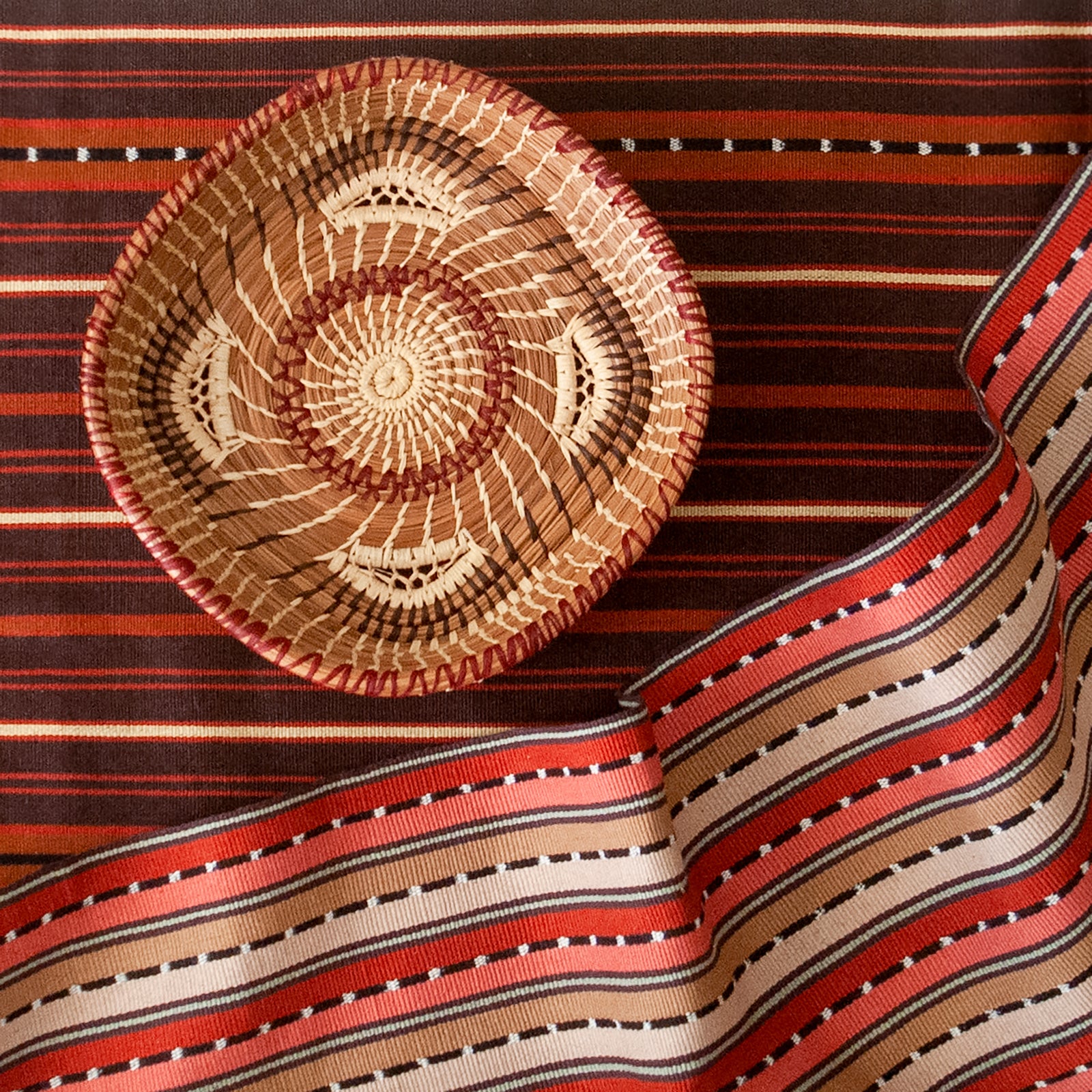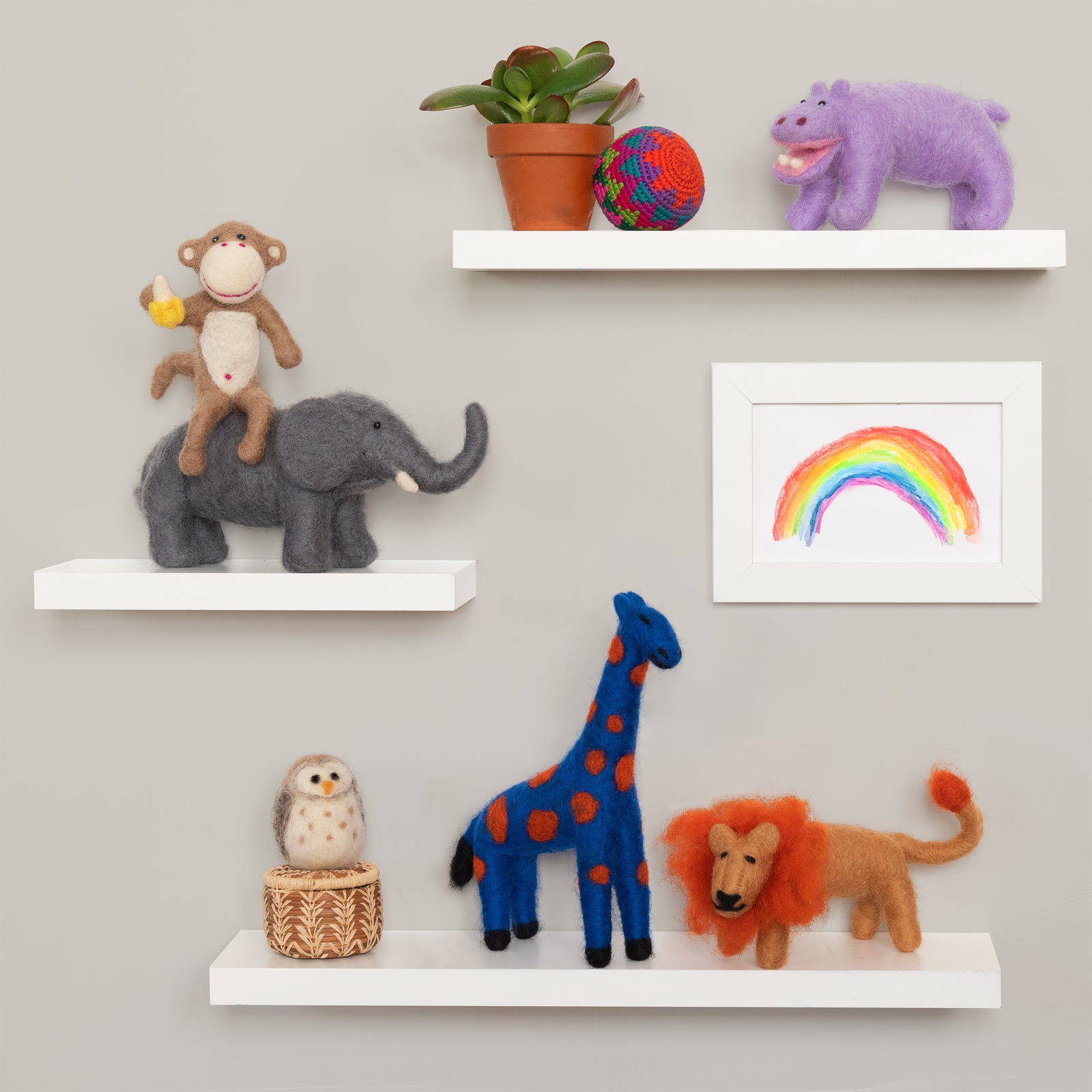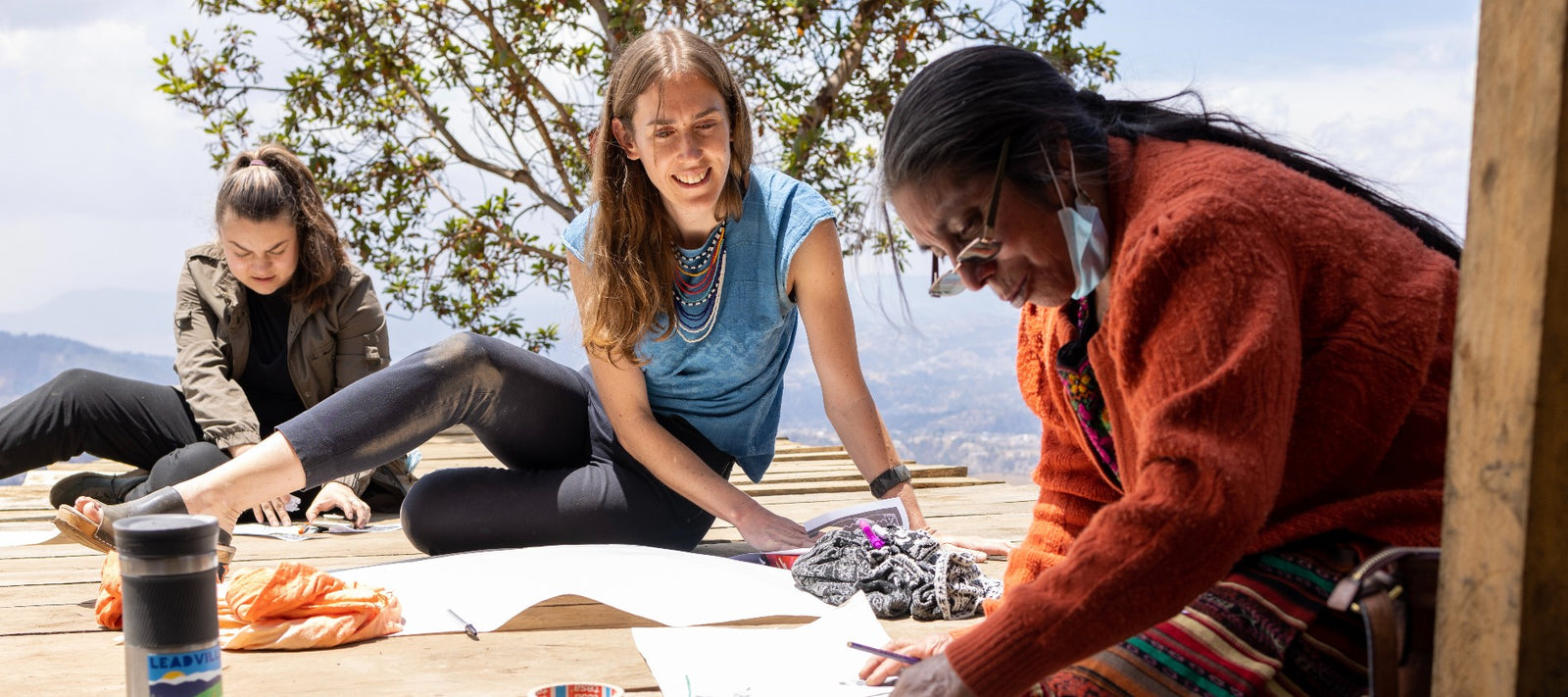
Our Santiago Brocade Collection is full of discoveries for the treasure seeker. At first glance, each piece, from pocket bag to coin purse to eyeglass case, is an attractive and useful accessory to help you stay organized. Up close though, each reveals intricate and textured patterns rendered in seemingly infinite combinations of colors, lines, and shapes. These fine but sturdy textiles are meticulously handwoven on the backstrap loom one at a time. No two are exactly alike, and each will bring pleasure to its owner.
For more than 3500 years, Mayan women have woven on the backstrap loom, or el telar de cintura, creating clothing and other textiles for their families as well as items to sell in the local market to generate income for their households. Myth has it that the backstrap loom was handed down by Our Grandmother the Moon, the goddess Ixchel, to the first woman at the beginning of time. This loom is a truly remarkable technology, little more than a bundle of sticks, deceptively simple in appearance, affordable and easily portable. But in the hands of a master weaver, amazingly complex magic occurs.
To weave, the back rod of the loom is tied to a tree or post while the other end rod has an attached belt that wraps around the weaver’s back. The weaver then shifts position as she weaves to create the necessary warp tension so can she pass the weft thread back and forth between warp threads. Like many weavers living in rural villages in Guatemala, weavers in Santiago Atitlán use a technique special to their community, a brocade that creates small patterns like zigzags, dots or even flowers in the horizontal weft stripes.
Brocade is similar to embroidery in that it involves a decorative element created with thread on cloth. However, unlike embroidery, designs are incorporated directly into the cloth as it is woven. Sometimes these supplemental weft patterns are created through use of a pick-up stick, or even a cactus needle, or by finger manipulation. In Santiago Atitlán, weavers use multiple heddles made from simple sticks to manipulate particular warp threads across the width of the textile. Each heddle lifts a different combination of threads and the order in which these heddles are raised allows patterns to emerge as different colors of weft threads are passed through the warp.

Our artisan partners in Santiago Atitlán learned to weave as girls and wear the beautiful traditional huipiles, or handwoven blouses, of their community that feature narrow horizontal weft bands with intricate patterns. To create their signature Santiago Brocade cloth, the weavers combine row after row of these detailed designs, expertly combining color and pattern. They are proud to share their woven gems, rich in tradition and artistry, with you and hope they enhance your everyday life as you use and enjoy these original works of art.









Leave a comment (all fields required)